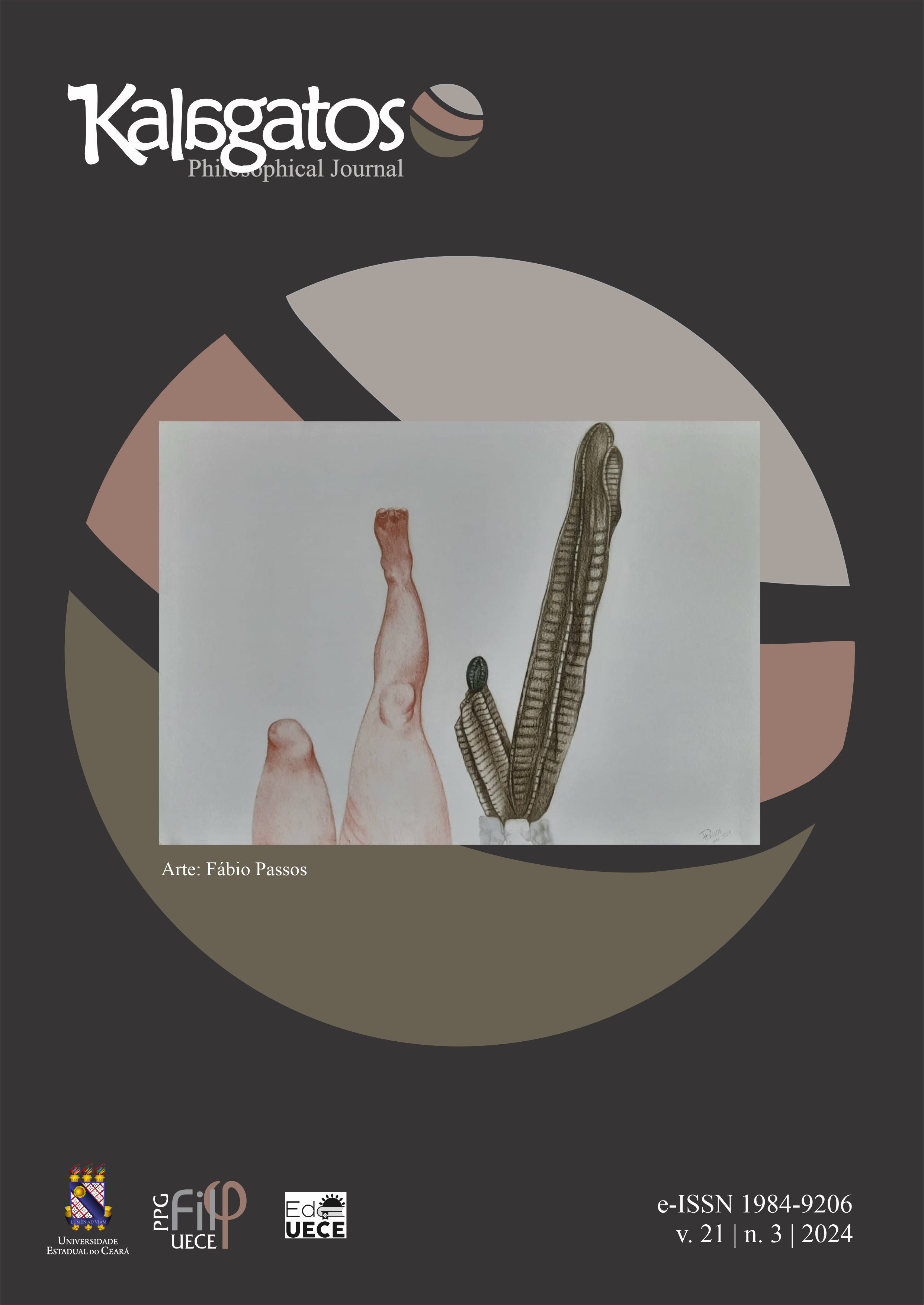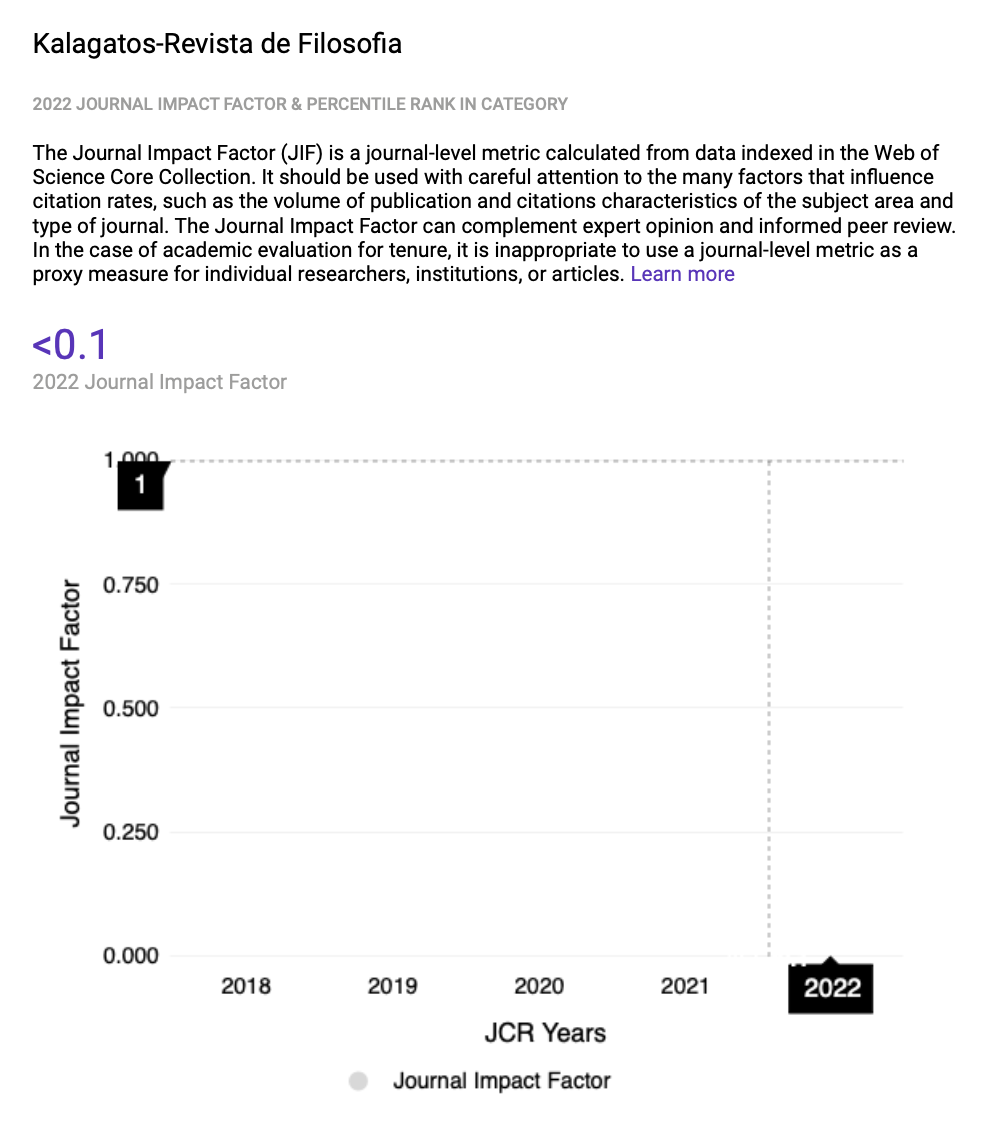Abordagem para Libertação e Salvação: Uma Análise Comparativa do Nirvana Budista e da Redenção Cristã
DOI:
https://doi.org/10.52521/kg.v21i3.13971Palavras-chave:
Spiritual Liberation, Nirvana, Redemption, Comparative Religion, SalvationResumo
Este estudo oferece uma análise comparativa da libertação no Budismo, com foco no Nirvana, e da salvação no Cristianismo, enfatizando a redenção. Explora como o Budismo e o Cristianismo abordam a busca humana fundamental pela realização espiritual. A análise revela que o Budismo vê o Nirvana como a cessação do sofrimento através da extinção dos desejos e da ignorância, em vez de simplesmente um estado de felicidade. O Cristianismo, por outro lado, apresenta a redenção como um processo transformador que envolve fé, arrependimento e renascimento espiritual, em vez de confiar apenas na graça divina. O estudo destaca que enquanto o Budismo enfatiza o esforço pessoal através da conduta ética e da meditação, o Cristianismo combina a graça divina com o compromisso pessoal e a adesão aos ensinamentos de Cristo. Ao destacar a interação matizada do esforço pessoal e da orientação espiritual em ambas as tradições, o estudo proporciona uma compreensão mais equilibrada de como cada religião aborda a busca pela libertação e salvação.
Downloads
Referências
Young, K. K. (1983). Dying for bhukti and mukti: The Śrīvaisnava theology of liberation as a triumph over death. Studies in Religion/Sciences Religieuses, 12(4), 389-396. https://doi.org/10.1177/000842988301200403
Tsushima, Michihito, et al. "The Vitalistic Conception of Salvation in Japanese New Religions: An Aspect of Modern Religious Consciousness." “Japanese Journal of Religious Studies”, vol. 6, no. 1/2, Mar.-Jun. 1979, pp. 139-161. “Proceedings of the 1978 Tokyo Meeting of the Conference Internationale de Sociologie Religieuse”, Nanzan University, www.jstor.org/stable/30233195.
Miyamoto, Shoson. “Freedom, Independence, and Peace in Buddhism.” Philosophy East and West, vol. 1, no. 4, 1952, pp. 30–40. JSTOR, https://doi.org/10.2307/1396994. Accessed 17 Aug. 2024.
Largen, K.J. (2006), Liberation, Salvation, Enlightenment: An Exercise in Comparative Soteriology. Dialog, 45: 263-274. https://doi.org/10.1111/j.1540-6385.2006.00276.x
Thathong, Kongsak. "A spiritual dimension and environmental education: Buddhism and environmental crisis." Procedia-Social and Behavioral Sciences 46 (2012): 5063-5068. https://doi.org/10.1016/j.sbspro.2012.06.386
Gäb, S. (2015), Why do we Suffer? Buddhism and the Problem of Evil. Philosophy Compass, 10, 345–353. doi: 10.1111/phc3.12207.
HARWOOD, H.J. (1949), THE WAY OF SALVATION AND THE BURMAN BUDDHIST. International Review of Mission, 38: 422-431. https://doi.org/10.1111/j.1758-6631.1949.tb02788.x
Hart, Trevor. “Humankind in Christ and Christ in Humankind: Salvation as Participation in Our Substitute in the Theology of John Calvin.” Scottish Journal of Theology 42.1 (1989): 67–84. Web. DOI: https://doi.org/10.1017/S0036930600040539
Boys-Smith, E. P. (1903). The Atonement Considered as Forgiveness. The Expository Times, 15(1), 26-30. https://doi.org/10.1177/001452460301500105
Lorimer, D. (1987). The Near-Death Experience and Spiritual Health. Holistic Medicine, 2(4), 179–184. https://doi.org/10.3109/13561828709043581
HARWOOD, H.J. (1949), THE WAY OF SALVATION AND THE BURMAN BUDDHIST. International Review of Mission, 38: 422-431. https://doi.org/10.1111/j.1758-6631.1949.tb02788.x
Augustine, Morris J. "The sociology of knowledge and Buddhist-Christian forms of faith, practice, and knowledge." Buddhist-Christian dialogue (1986): 35-51.
Childers, R. C. “Art. XII.—Notes on Dhammapada, with Special Reference to the Question of Nirvâṇa.” Journal of the Royal Asiatic Society 5.2 (1871): 219–230. Web. DOI: https://doi.org/10.1017/S0035869X00161246
Chaudhuri, K. N. “Paul Langford (Ed.): The Writings and Speeches of Edmund Burke. Vol.II: Party, Parliament, and the American Erisis 1766–1774. Textual Editor for the Writings, William B. Todd. Xviii, 508 Pp. Oxford: Clarendon Press: Oxford University Press, 1981. £40.” Bulletin of the School of Oriental and African Studies 46.1 (1983): 164–166. Web. DOI: https://doi.org/10.1017/S0041977X00077727
Childers, R. C. “Art. XII.—Notes on Dhammapada, with Special Reference to the Question of Nirvâṇa.” Journal of the Royal Asiatic Society 5.2 (1871): 219–230. Web. DOI: https://doi.org/10.1017/S0035869X00161246
Chansomsak, S., & Vale, B. (2008). The Buddhist approach to education: an alternative approach for sustainable education. Asia Pacific Journal of Education, 28(1), 35–50. https://doi.org/10.1080/02188790701850063
Young, S. (1994). Purpose and method of Vipassana meditation. The Humanistic Psychologist, 22(1), 53–61. https://doi.org/10.1080/08873267.1994.9976936
Murgatroyd, W. (2001), The Buddhist Spiritual Path: A Counselor's Reflection on Meditation, Spirituality, and the Nature of Life. Counseling and Values, 45: 94-102. https://doi.org/10.1002/j.2161-007X.2001.tb00188.x
Childers, R. C. “Art. XII.—Notes on Dhammapada, with Special Reference to the Question of Nirvâṇa.” Journal of the Royal Asiatic Society 5.2 (1871): 219–230. Web. DOI: https://doi.org/10.1017/S0035869X00161246
Rupp, George. “The Relationship between Nirvāna and Samsāra: An Essay on the Evolution of Buddhist Ethics.” Philosophy East and West, vol. 21, no. 1, 1971, pp. 55–67. JSTOR, https://doi.org/10.2307/1397764. Accessed 17 Aug. 2024.
Makransky, J. (2003). Buddhist Perspectives on Truth in other Religions: Past and Present. Theological Studies, 64(2), 334-361. https://doi.org/10.1177/004056390306400205
Byrd, D. (2013). Four Noble Truths. In: Runehov, A.L.C., Oviedo, L. (eds) Encyclopedia of Sciences and Religions. Springer, Dordrecht. https://doi.org/10.1007/978-1-4020-8265-8_201285
Groves, P. Buddhist Approaches to Addiction Recovery. Religions 2014, 5, 985-1000. https://doi.org/10.3390/rel5040985
Gäb, S. (2015), Why do we Suffer? Buddhism and the Problem of Evil. Philosophy Compass, 10, 345–353. doi: 10.1111/phc3.12207.
Childers, R. C. “Art. XII.—Notes on Dhammapada, with Special Reference to the Question of Nirvâṇa.” Journal of the Royal Asiatic Society 5.2 (1871): 219–230. Web. DOI: https://doi.org/10.1017/S0035869X00161246
Bodhi, B. (2008), Aims of Buddhist Education. Yearbook of the National Society for the Study of Education, 107: 224-226. https://doi.org/10.1111/j.1744-7984.2008.00206_1.x
Young, S. (1994). Purpose and method of Vipassana meditation. The Humanistic Psychologist, 22(1), 53–61. https://doi.org/10.1080/08873267.1994.9976936
Kumar, Sameet M. "An introduction to Buddhism for the cognitive-behavioral therapist." Cognitive and Behavioral Practice 9.1 (2002): 40-43. https://doi.org/10.1016/S1077-7229(02)80038-4
Gregg, J. A. F. (1923). Christ our Redemption. The Expository Times, 34(8), 355-358. https://doi.org/10.1177/001452462303400804
Boys-Smith, E. P. (1903). The Atonement Considered as Forgiveness. The Expository Times, 15(1), 26-30. https://doi.org/10.1177/001452460301500105
Warfield, Benjamin B. The plan of salvation. Wipf and Stock Publishers, 2000.
Rust, E. C. (1962). The Atoning Act of God in Christ. Review & Expositor, 59(1), 57-70. https://doi.org/10.1177/003463736205900105
Votaw, Clyde Weber. "A Professional Reading Course on the Ethical Teaching of Jesus. IV." The Biblical World 47.1 (1916): 54-62.
Wakefield, A. H. (2007). What Happens When We Pray? Review & Expositor, 104(4), 787-809. https://doi.org/10.1177/003463730710400409
Belden, Rev. A. D. (1924). The Religion of Redemption and the Life of the Redeemed. Review & Expositor, 21(2), 213-223. https://doi.org/10.1177/003463732402100208
Belden, Rev. A. D. (1924). The Religion of Redemption and the Life of the Redeemed. Review & Expositor, 21(2), 213-223. https://doi.org/10.1177/003463732402100208
Belden, A. D. (1926). The Atonement and Democracy. Baptist Quarterly, 3(1), 11–16. https://doi.org/10.1080/0005576X.1926.11750055
Rust, E. C. (1962). The Atoning Act of God in Christ. Review & Expositor, 59(1), 57-70. https://doi.org/10.1177/003463736205900105
HARWOOD, H.J. (1949), THE WAY OF SALVATION AND THE BURMAN BUDDHIST. International Review of Mission, 38: 422-431. https://doi.org/10.1111/j.1758-6631.1949.tb02788.x
Reardon, B. M. G. (1955). Existentialism and Christian Faith—II. The Expository Times, 66(5), 132-135. https://doi.org/10.1177/001452465506600502
Rupp, George. “The Relationship between Nirvāna and Samsāra: An Essay on the Evolution of Buddhist Ethics.” Philosophy East and West, vol. 21, no. 1, 1971, pp. 55–67. JSTOR, https://doi.org/10.2307/1397764. Accessed 18 Aug. 2024.
Siderits, M. (2005). Freedom, Caring and Buddhist Philosophy. Contemporary Buddhism, 6(2), 87–116. https://doi.org/10.1080/14639940500435521
Gäb, S. (2015), Why do we Suffer? Buddhism and the Problem of Evil. Philosophy Compass, 10, 345–353. doi: 10.1111/phc3.12207.
Joshi, K. S. “Liberation: The Avowed Goal of Indian Philosophy.” Philosophy East and West, vol. 18, no. 1/2, 1968, pp. 77–81. JSTOR, https://doi.org/10.2307/1398038. Accessed 18 Aug. 2024.
Belden, Rev. A. D. (1924). The Religion of Redemption and the Life of the Redeemed. Review & Expositor, 21(2), 213-223. https://doi.org/10.1177/003463732402100208
Boys-Smith, E. P. (1903). The Atonement Considered as Forgiveness. The Expository Times, 15(1), 26-30. https://doi.org/10.1177/001452460301500105
Warfield, Benjamin B. The plan of salvation. Wipf and Stock Publishers, 2000.
HARWOOD, H.J. (1949), THE WAY OF SALVATION AND THE BURMAN BUDDHIST. International Review of Mission, 38: 422-431. https://doi.org/10.1111/j.1758-6631.1949.tb02788.x
Bodhi, Bhikkhu. The noble eightfold path: The way to the end of suffering. Buddhist Publication Society, 2010.
Hopkins, E. Washburn. "The message of Buddhism to Christianity." The biblical world 28.2 (1906): 94-107.
de Vibe, M., Hammerstrøm, K., Kowalski, K. and Bjørndal, A. (2010), PROTOCOL: Mindfulness Based Stress Reduction (MBSR) for improving health and social functioning in adults. Campbell Systematic Reviews, 6: 1-25. https://doi.org/10.1002/CL2.72
Bodhi, B. (2008), Aims of Buddhist Education. Yearbook of the National Society for the Study of Education, 107: 224-226. https://doi.org/10.1111/j.1744-7984.2008.00206_1.x
Hart, Trevor. “Humankind in Christ and Christ in Humankind: Salvation as Participation in Our Substitute in the Theology of John Calvin.” Scottish Journal of Theology 42.1 (1989): 67–84. Web.
Grace, R. L. “Luther’ Doctrine of Grace.” Scottish Journal of Theology 18.4 (1965): 385–395. Web.
Trueblood, E. J. (1934). Social Elements in the Christian Religion. Review & Expositor, 31(4), 427-439. https://doi.org/10.1177/003463733403100403
Ray, Reginald A. “Solitary Retreat in American Buddhism and Buddhist-Christian Dialogue.” Buddhist-Christian Studies, vol. 16, 1996, pp. 129–42. JSTOR, https://doi.org/10.2307/1390162. Accessed 18 Aug. 2024.
Betty, Stafford. "What Buddhists and Christians Are Teaching Each Other About God." CrossCurrents, vol. 58 no. 1, 2008, p. 108-116. Project MUSE, https://dx.doi.org/10.1353/cro.2008.a782405.
Trammel, R. C. (2017). Tracing the roots of mindfulness: Transcendence in Buddhism and Christianity. Journal of Religion & Spirituality in Social Work: Social Thought, 36(3), 367–383. https://doi.org/10.1080/15426432.2017.1295822
Trammel, R. C. (2017). Tracing the roots of mindfulness: Transcendence in Buddhism and Christianity. Journal of Religion & Spirituality in Social Work: Social Thought, 36(3), 367–383. https://doi.org/10.1080/15426432.2017.1295822
Abdullah, I., S. Abdul Manas, M. I. Mohamed Siddeek, and M. Z. Husain. “Ethics of Love in Islam and Christianity: A Comparative Study”. KURIOSITAS: Media Komunikasi Sosial Dan Keagamaan, Vol. 13, no. 2, Dec. 2020, pp. 125-40, doi:10.35905/kur.v13i2.1423.
Downloads
Publicado
Como Citar
Edição
Seção
Licença
Copyright (c) 2024 Dipty D Sangma, Bharani M

Este trabalho está licenciado sob uma licença Creative Commons Attribution 4.0 International License.



















